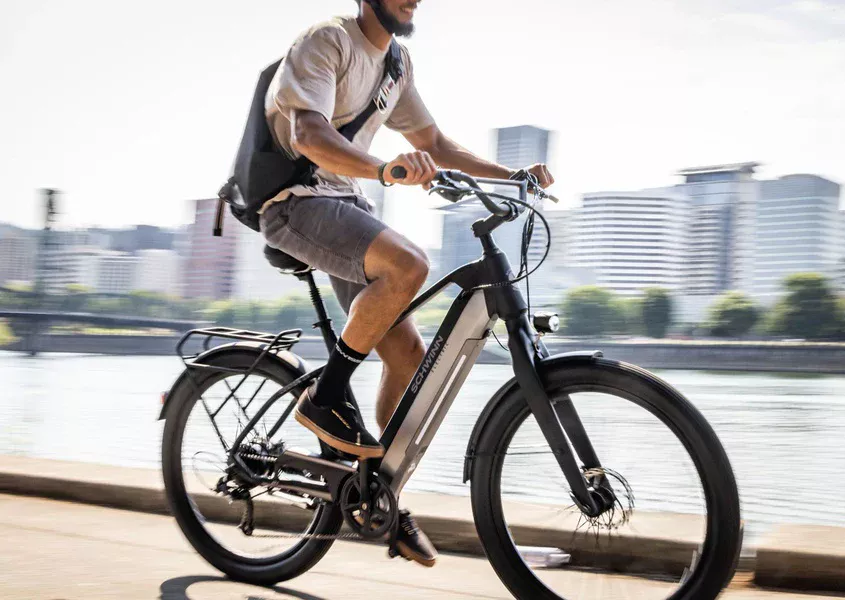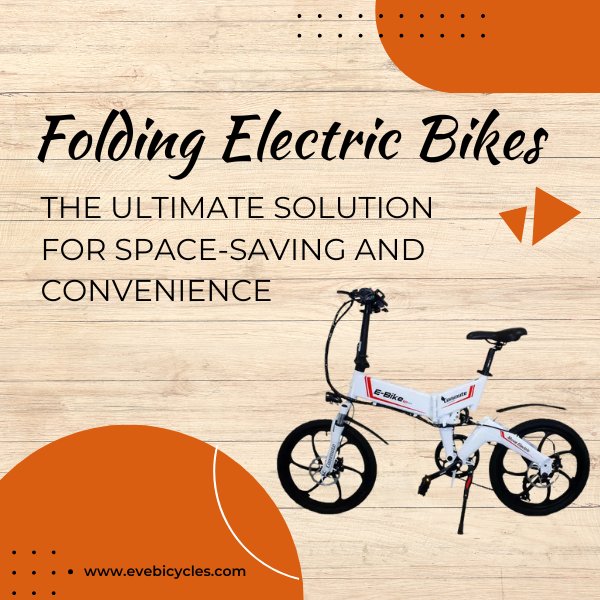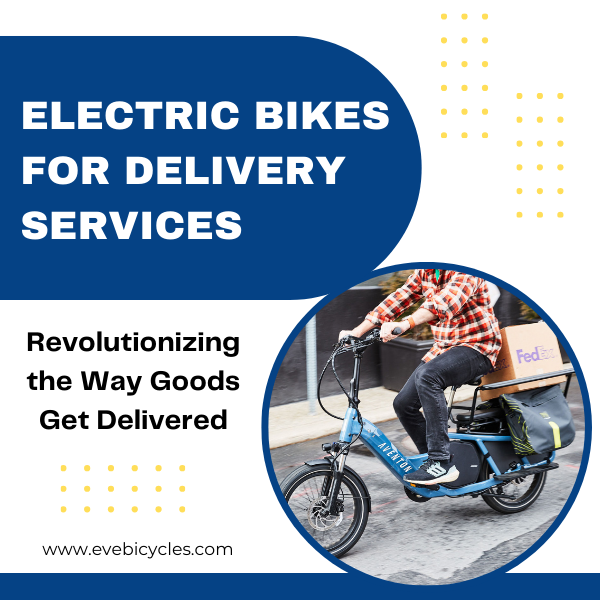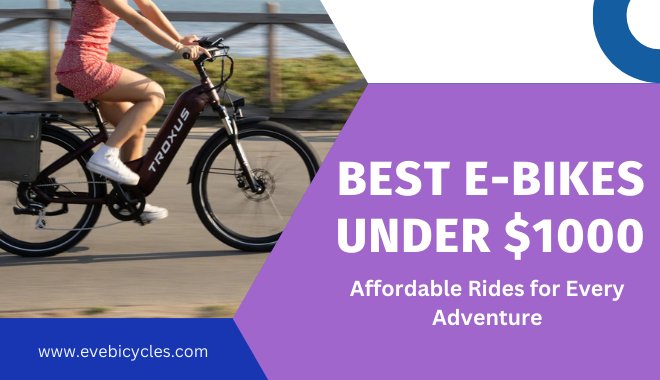Electric Commuter Bikes: The Future of Urban Travel
Introduction: Revolutionizing Your Commute Let’s face it—commuting isn’t exactly the highlight of your day. Whether it’s bumper-to-bumper traffic, overcrowded public transport, or…
Introduction: Revolutionizing Your Commute
Let’s face it—commuting isn’t exactly the highlight of your day. Whether it’s bumper-to-bumper traffic, overcrowded public transport, or those long, sweaty bike rides, getting to work (or anywhere, really) can feel like a chore. Enter electric commuter bikes—a practical, eco-friendly, and surprisingly fun way to transform how you get around.
Electric commuter bikes aren’t just for the tech-savvy or fitness buffs. They’re for anyone who wants to save time, reduce stress, and embrace a cleaner, greener lifestyle. From busy professionals to students and even retirees, these bikes are turning heads and changing the game.
In this guide, we’ll dive into everything you need to know about electric commuter bikes. What makes them special? How do you choose the right one? And why are they quickly becoming the go-to option for city travel? Let’s pedal into it!

What Exactly Is an Electric Commuter Bike?
Before we get into the nitty-gritty, let’s cover the basics. An electric commuter bike, or e-bike, is essentially a regular bicycle that’s been upgraded with a motor, a battery, and sometimes a throttle. It’s designed to give you that extra push when you need it, making your ride easier, faster, and more enjoyable.
Key Features of E-Bikes
- Motor Power: The motor provides assistance when you pedal, letting you conquer hills and long distances without breaking a sweat.
- Battery Life: E-bikes come with rechargeable batteries that typically offer ranges between 20 to 80 miles, depending on the model and your riding style.
- Pedal Assist vs. Throttle:
- Pedal assist adds power as you pedal.
- Throttle lets you zip along without pedaling, just like a scooter.
- Speed Settings: Most commuter e-bikes are capped at speeds between 20-28 mph to comply with local laws.
Why Electric Commuter Bikes Are Taking Over the Streets
There’s a reason everyone’s talking about e-bikes—they’re downright awesome. Here’s why they’re perfect for commuters:
1. Faster and Easier Commuting
Think about it: no more waiting in traffic or squeezing onto packed buses. E-bikes let you glide through the city at a steady pace. With pedal assist or throttle mode, you can get where you need to go without feeling exhausted.
2. Save Money in the Long Run
Yeah, buying an e-bike might seem like a big upfront cost. But when you factor in the savings on gas, parking fees, and public transport, it’s a no-brainer. Plus, charging the battery is way cheaper than filling up a gas tank.
3. Good for You, Good for the Planet
E-bikes are a win-win. They reduce carbon emissions and help you stay active (without making you feel like you’re training for the Tour de France). It’s an eco-friendly way to reduce your carbon footprint and feel good about your choices.
4. No More Sweat-Filled Rides
One of the biggest drawbacks of regular bikes is showing up to work drenched in sweat. With an e-bike, you can enjoy a smooth, breezy ride—even on hot days. The motor does most of the hard work for you.
5. Perfect for Urban Life
Parking in the city can be a nightmare, but e-bikes take up minimal space. Most models are lightweight and foldable, making them super convenient for apartment dwellers or those with limited storage.
How to Choose the Right Electric Commuter Bike
Choosing an electric commuter bike can feel a bit like walking into a candy store—there are just so many options! The good news is that there’s an e-bike out there for everyone, whether you’re a city slicker, a weekend explorer, or someone looking for a reliable ride to and from work. Here’s a deep dive into what to consider when finding the one.
1. Determine Your Commute Needs
Before you even start shopping, think about your daily commute. Are you covering a short distance on flat city streets, or do you need to conquer steep hills and rough terrain? This will help narrow down your options.
- Short Commutes (under 10 miles round trip): A lightweight e-bike with a smaller battery will do just fine. You won’t need to spend extra on extended range or high-power motors.
- Medium Commutes (10-25 miles): Look for bikes with a stronger motor (350W-500W) and a battery that can handle at least 30 miles on a single charge.
- Long Commutes (25+ miles): Prioritize long-range batteries, efficient motors, and comfort features like a padded seat and suspension fork.
2. Decide on the Motor Type
The motor is the heart of an electric bike, and the type of motor you choose can significantly affect your riding experience.
- Hub Motors: These are mounted in the front or rear wheel and provide a smooth, consistent boost. They’re great for flat terrain and city commutes. Rear hub motors, in particular, offer better traction and balance.
- Mid-Drive Motors: Located at the center of the bike, these provide more natural assistance and better weight distribution. They’re ideal for hilly areas or riders looking for a sporty feel. The downside? They’re typically more expensive.
- Geared vs. Direct Drive Motors: Geared motors are compact and lightweight, making them perfect for city riders, while direct drive motors are more durable and suited for high-speed cruising.
3. Evaluate Battery Capacity
Battery capacity determines how far you can ride before needing a recharge. This is measured in watt-hours (Wh). The higher the watt-hours, the more range you’ll get.
- 250-350 Wh: Suitable for light city riding and short commutes.
- 400-600 Wh: A good choice for medium commutes and moderate hills.
- 700+ Wh: Designed for long-distance riders, heavy loads, or challenging terrain.
Pro Tip: Always account for real-world factors like wind, terrain, and rider weight, which can affect your range. If in doubt, go for a higher capacity battery—you’ll thank yourself on those longer rides.
4. Think About Frame Styles
The frame style isn’t just about looks—it impacts your comfort and practicality.
- Step-Through Frames: These are perfect for commuters who want easy on-and-off access. They’re especially convenient for riders in formal wear, dresses, or anyone carrying a bag or child seat.
- Step-Over Frames: The classic bike frame style offers better stability and is preferred by riders who like a sporty feel.
- Folding Frames: If you’re short on storage space or need to take your bike on public transport, a folding e-bike is a lifesaver. They’re compact, portable, and ideal for urban dwellers.
5. Prioritize Comfort Features
Commuting can be tiring, so look for features that enhance your comfort:
- Suspension Systems: Front fork suspension or full suspension is a must if your route involves bumpy roads or uneven paths. It absorbs shocks and keeps your ride smooth.
- Ergonomic Design: Adjustable handlebars and cushioned seats make a huge difference, especially on longer rides. Some bikes even come with grips designed to reduce hand fatigue.
- Upright Riding Position: Many commuter e-bikes are designed to keep you upright, which reduces strain on your back and shoulders.
6. Assess Speed and Power Limits
E-bike motors are typically capped at specific speeds to comply with local regulations. For commuter bikes, you’ll mostly encounter two classes:
- Class 1: Pedal-assist only, with a maximum speed of 20 mph. These are allowed on most bike paths and trails.
- Class 2: Includes both pedal-assist and throttle modes, also capped at 20 mph.
- Class 3: Pedal-assist only, but with a maximum speed of 28 mph. These are faster but might be restricted in certain areas.
If you’re a speed demon, Class 3 bikes might be your jam. Otherwise, Class 1 and Class 2 are more than sufficient for most urban commutes.
7. Look for Integrated Accessories
The right accessories can take your e-bike experience to the next level. Many commuter e-bikes come with built-in features, but you can always add extras based on your needs:
- Lights: Front and rear lights are crucial for night riding or foggy weather. Many e-bikes come with integrated LED lights powered by the bike’s battery.
- Fenders: These protect you from mud and water splashes, keeping your outfit clean on rainy days.
- Cargo Options: If you’re carrying groceries, work gear, or even kids, look for bikes with sturdy racks, panniers, or baskets. Some models even have built-in cargo systems for ultimate convenience.
- Bell or Horn: It’s a small detail, but a good bell or horn can be a lifesaver in crowded areas.
8. Battery Placement: Does It Matter?
Yes! Battery placement affects the bike’s balance and ease of use:
- Integrated Battery: These are built into the frame for a sleek, modern look. They offer better protection from weather and theft but might be harder to remove.
- External Battery: Easy to detach for charging or replacement. These are more common in budget-friendly models.
9. Consider Build Quality
A well-built e-bike will last longer and perform better. Pay attention to:
- Frame Material: Aluminum is lightweight and rust-resistant, while steel is heavier but more durable. Carbon fiber is premium and offers the best strength-to-weight ratio.
- Brakes: Hydraulic disc brakes provide excellent stopping power, even in wet conditions. Mechanical disc brakes are a more affordable alternative but might require more maintenance.
10. Budget Wisely
E-bikes are an investment, so it’s essential to know what you’re paying for:
- Under $1,000: Entry-level bikes with basic features. Great for casual riders or short commutes.
- $1,000-$2,500: Mid-range options with better motors, longer battery life, and added comfort features.
- $2,500 and Up: High-end models with premium components, extended range, and advanced tech like GPS tracking or app connectivity.
11. Test Ride Before You Buy
You wouldn’t buy a car without test-driving it, right? The same goes for e-bikes. A test ride can help you figure out if the bike feels right for your body size, riding style, and daily needs.
12. Check the Warranty and Customer Support
Last but not least, make sure your e-bike comes with a solid warranty. This is especially important for the motor and battery, which are the most expensive parts to repair or replace. A good customer support team can also be a lifesaver if you run into issues.
By considering these factors, you’ll be well-equipped to find the perfect electric commuter bike. Whether you’re a first-time rider or a seasoned cyclist, there’s an e-bike out there that fits your lifestyle like a glove. Happy riding!
Top Electric Commuter Bikes to Check Out
If you’re overwhelmed by the options, don’t worry. Here are some of the best e-bikes on the market:
- RadCity 5 Plus
Affordable, reliable, and packed with commuter-friendly features like a rear rack and integrated lights. - Specialized Turbo Vado
Sleek design, smooth ride, and powerful motor—perfect for urban professionals. - Aventon Level
A budget-friendly option with impressive battery range and a comfortable ride. - Cannondale Adventure Neo
Lightweight and stylish, with excellent handling for city streets. - Trek Allant+ 7S
High-performance and durable, with premium features for serious riders.
The Pros and Cons of Electric Commuter Bikes
Before you take the plunge, let’s weigh the good and the not-so-good.
Pros
- Faster commutes
- Lower transportation costs
- Eco-friendly
- Reduces physical strain
- Easy parking and storage
Cons
- Initial cost can be steep
- Batteries need charging
- Heavier than regular bikes
- Not all models are weatherproof
Tips for Maintaining Your E-Bike
To keep your e-bike running smoothly, a little maintenance goes a long way:
- Battery Care: Always charge your battery indoors and avoid overcharging.
- Tire Checks: Properly inflated tires improve performance and range.
- Regular Cleaning: Wipe down your bike to remove dirt and grime.
- Professional Tune-Ups: Schedule periodic check-ups to ensure everything’s in working order.
Common Myths About Electric Commuter Bikes
Let’s clear up some misconceptions:
Myth #1: E-Bikes Are Cheating
Nah. You’re still pedaling—just with a little extra help. It’s like having a superpower.
Myth #2: They’re Too Expensive
While the upfront cost might seem high, the long-term savings on gas and maintenance make them a smart investment.
Myth #3: E-Bikes Are Only for Lazy People
Wrong again! E-bikes make cycling accessible for everyone, regardless of fitness level.
FAQs About Electric Commuter Bikes
Q: Can e-bikes go uphill?
You bet! The motor makes climbing hills a breeze.
Q: Are they safe to ride in traffic?
Absolutely, as long as you follow local traffic laws and wear a helmet.
Q: How long does it take to charge the battery?
Most batteries take 3-6 hours to fully charge.
Q: Can I ride an e-bike in the rain?
Yes, but avoid submerging it in water and always check for waterproof components.
Q: Do I need a license to ride an e-bike?
In most places, no. Just check your local regulations to be sure.
Conclusion: Ready to Join the E-Bike Revolution?
Electric commuter bikes aren’t just a trend—they’re a lifestyle upgrade. Whether you’re looking to save time, money, or the planet (or all three), these bikes are the perfect way to take your daily commute to the next level.
So, what are you waiting for? Check out evebicycles.com to find the e-bike that fits your style and needs. Trust us—once you make the switch, you’ll wonder how you ever survived without one.






